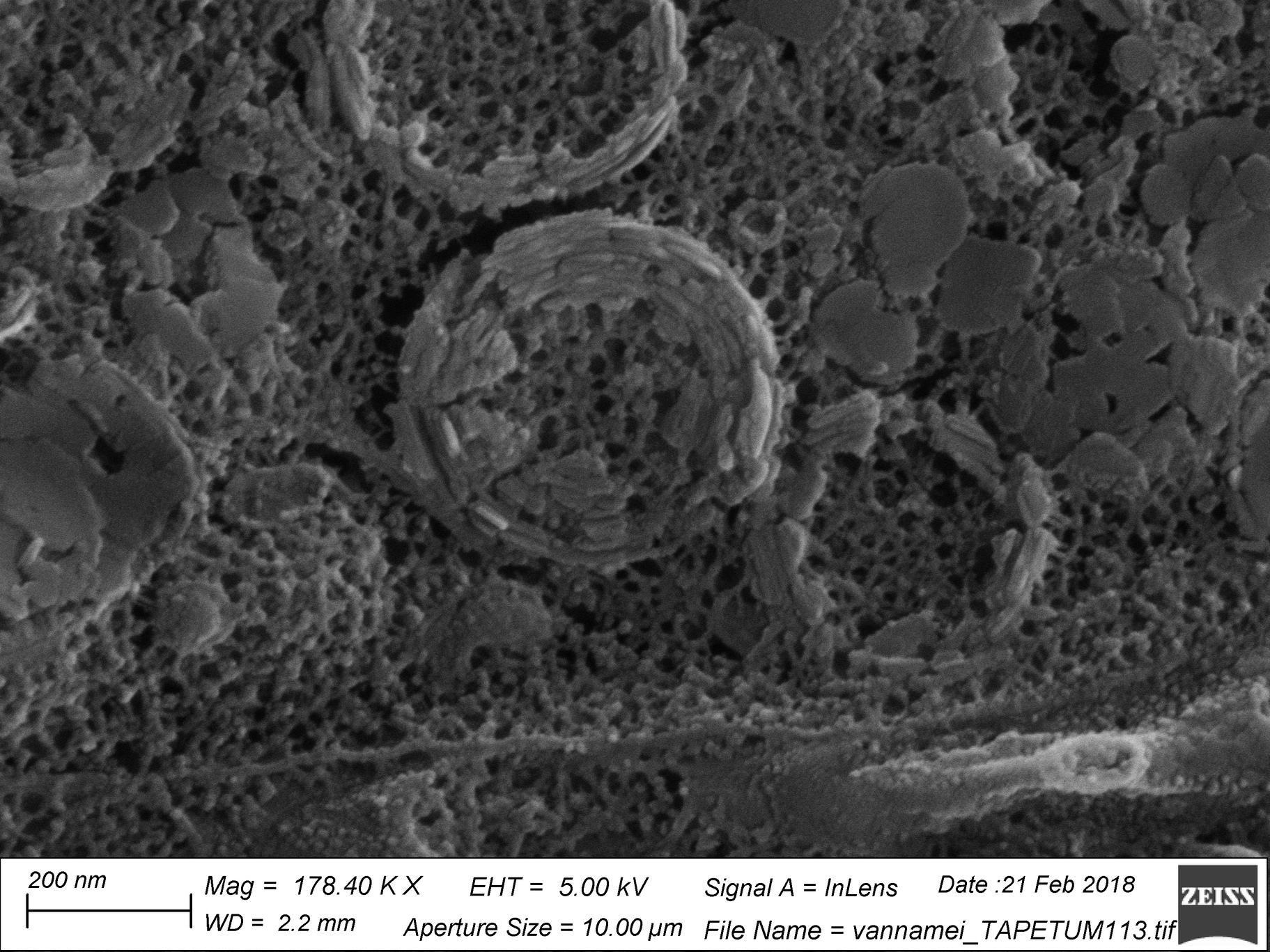Have you ever looked a shrimp in the eye? If you had, you might have noticed it gleaming in the dark. That's because the shrimp has a reflector underlying its retina (a 'tapetum') made of tightly packed nanoparticles that allows the eye to collect more light. The unique structure of this reflector was discovered in a collaboration between BGU and the Weizmann Institute of Science and their findings were just published in Nature Nanotechnology.
The shrimp's reflector is composed of a close-packed assembly of spherical nanoparticles. Each of these nanoparticles is constructed from hundreds of crystal plates, which are arranged in concentric layers around a hollow core, closely resembling an onion! It doesn't stop there. The tiny platelets are arranged such that their highly reflective flat faces point away from the surface of the sphere in all directions – a bit like a disco ball shrunk down to the nanoscale.
This special configuration is known as a spherulite, and while physicists had theorized that dense assemblies of nanoscale spherulites could enhance reflectivity, they had not managed to create one artificially.
The result of the unique nanoparticle configuration in the shrimp is a huge enhancement in the efficiency of its reflector. The finding has unveiled new insights into optics at the nanoscale.

"It's not often that new principles in optics are revealed by biological systems," adds Dr. Benjamin Palmer (pictured above), a member of the Department of Chemistry and lead author on the paper. Palmer, who began the research during his postdoc in the Weizmann Institute, is fascinated by optical crystals in biology and teamed up with Dr. Venkata Jayasurya Yallapragada, a postdoctoral fellow in the group of Prof. Dan Oron (Weizmann Institute), to map these crystals in the shrimp's eye and determine their properties.
“The more I thought about how light propagates through these particles, the more I was intrigued by them", says Yallapragada, who uses a variety of computational techniques to model the optics of spherulites.
The secrets of the shrimp eye could inspire new, highly efficient paints and coatings which could be made ultra-thin, yet highly reflective. The Palmer group is now trying to understand the tricks the shrimps use to make such complex particles with the view to being able to re-create them in the lab.
Dr. Palmer has just been awarded a prestigious ERC Starting Grant.



Above photo: The shrimp's tapetum at the micron and nanometer scale. Credit: Dr. Ben Palmer and Dr. Venkata Jayasurya Yallapragada
Media Coverage:
Breaking Israel News
The Times of Israel